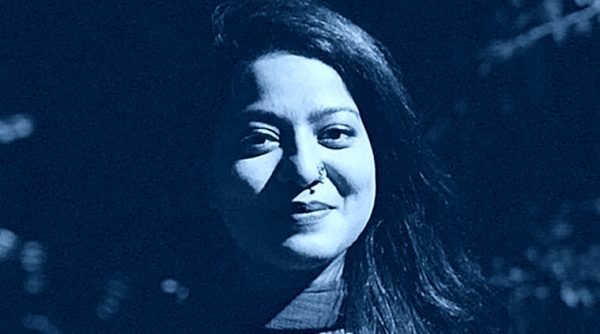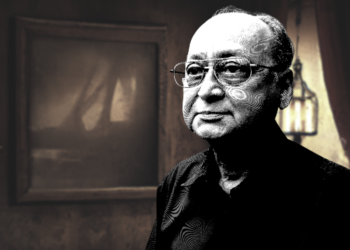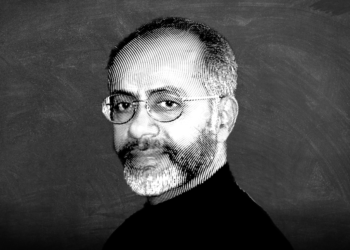
Safoora Zargar has been denied bail for the third time. The 27-year-old is a research scholar from Jamia Millia Islamia and is presently over five months pregnant. Zargar was associated with the Jamia Coordination Committee (JCC), which had organised weeks of peaceful protests against the CAA. On April 10, more than a month after communal violence broke out in Delhi, she was arrested by the Delhi Police’s Special Cell in connection with the Jafrabad road-block case (FIR 48/2020). Three days later, she was presented before a Magistrate in Mandoli Jail where she was granted bail.
On the same day, her name was added to FIR 59/2020. This led to her arrest again and thereby continued her incarceration. It is noteworthy that FIR 59/2020 was initially registered under Indian Penal Code (IPC) provisions dealing with, inter alia, rioting with deadly weapons and unlawful assembly. Subsequently, once the case was transferred to the Special Cell, various other charges such as attempt to murder, sedition, and promoting enmity between different communities on grounds of religion were added. Finally, on April 21, provision of the draconian Unlawful Activities (Prevention) Act, 1967 (UAPA) was also added to the FIR.
What was inflammatory about Zargar’s speech?
The latest bail application was heard by the Additional Sessions Judge of the Patiala House Court. The prosecution alleged that Zargar had delivered an inflammatory speech at Chand Bagh on February 23, 2020, which caused violence in North East Delhi. Zargar’s counsel rebutted this and pointed out that as per FIR violence in Chand Bagh started around 1 p.m. on Feb. 24 and the applicant was never present on that date in Chand Bagh. This is crucial since the law mandates an inflammatory speech is one that imminently incites violence, as shall be discussed later in this article. Zargar’s counsel acknowledged that she had delivered a speech at Khureji (not Chand Bagh) on February 23. However, that speech did not incite anyone to resort to violence.
Her mere presence at a protest held at Chand Bagh cannot be sufficient to invoke provisions of the UAPA. Further, Zargar’s counsel argued that indulging in a peaceful protest against the CAA in no manner amounts to causing “disaffection against India” within the meaning of Section 2(o) of the UAPA. It was submitted that the applicant was “mischievously arrested” despite being previously granted bail in FIR 48/2020. This was an attempt to illegally curtail her liberty. Lastly, bail was sought on humanitarian grounds—since the applicant is over five months pregnant and also suffering from Polycystic Ovarian Disease. It was pointed out that her condition was all the more vulnerable, given that COVID-19 cases had been reported in all three jails in Delhi.
What the Prosecution claims?
The prosecution opposed the bail application—arguing that there is sufficient material available on the record to suggest that the applicant was “involved in the Delhi riots”. Reliance was placed on a seizure memo related to FIR 101/2020 which includes materials such as glass bottles, a plastic crate containing brick and stones, and three slingshots. Further, reference to this seizure memo by the Prosecution is perplexing, since Zargar has been arrested under FIR 59/2020 and not FIR 101/2020. The prosecution’s case is unclear about if she has any connection with the materials seized.
It was argued on behalf of the prosecution that the (alleged) inflammatory speech, aforementioned recovery of materials, and witness statements recorded under sections 161/164 CrPC collectively indicate that the communal violence in Delhi was the result of a “larger conspiracy to disrupt the normal functioning of the city”. It was further submitted that section 43D(5) of the UAPA serves as a “statutory embargo” against granting bail to the applicant in the present case.
The bail puzzle of UAPA
At this stage, it must be pointed out that the UAPA-specific charges in Zargar’s second FIR 59/2020, don’t just relate to ‘unlawful activity’ [Section 2(o) read with Section 13] but also include terrorist act (Section 16), raising funds for a terrorist act (Section 17), and conspiracy to commit a terrorist act (Section 18). The presence of these additional charges is important for two reasons. Firstly, the Court cannot simply inspect the validity of invoking Section 13 without examining the correctness in invocation of these provisions of the UAPA. This is crucial since these provisions carry punishments as severe as life imprisonment and death.
Secondly, bail under Section 43D(5) of the UAPA draws a distinction between offences punishable under Chapters IV and VI, and offences falling outside these two chapters. It is only for offences which fall under Chapters IV and VI that stringent bail provisions apply. In these cases the accused does not get bail if there are reasonable grounds to believe that the accusations are prima facie true. Notably, Section 13 of the UAPA, which punishes ‘unlawful activity’ falls under Chapter III and is thus outside the ambit of S 43D (5) of UAPA. Therefore, even if the Court found that a prima facie case exists against Zargar for causing “disaffection against India”, the Court would still have to apply the standard tests for determining the question of bail.
What is ‘disaffection against India’?
The Court first proceeds to answer the question of whether provisions of the UAPA have been correctly invoked? To determine this, the Court examines the scope of the expression “[to cause] disaffection against India” in Section 2(o) under the definition of ‘unlawful activity’. The Court relies on Kedar Nath Singh v. State Of Bihar to hold that “mere violence is not the gravamen of charge u/s 2(o) of UAPA”. The Court adds that “Any activity which has a tendency to create a disorder or disturbance of law and order to such an extent that the entire city is brought to its knees and the entire government machinery is brought to a grinding halt…would obviously be treated as an unlawful activity within the meaning of Section 2(o) of UAPA.”
Admittedly, an activity with such drastic impacts may fall within the bounds of Section 2(o), UAPA. But the question is, whether there were any reasonable grounds for believing that Safoora Zargar was engaged in such an activity? To answer this, the Court relies on statements recorded under Sections 161/164 CrPC and WhatsApp chats available on the record. While the former do not constitute substantive evidence, the latter’s content is not discussed by the Court. Despite this, the court infers “ there is prima facie evidence to show that there was a conspiracy to at least blockade the roads (chakka jaam)”. The Court also notes that the same is an offence under Section 339 IPC which deals with wrongful restraint of passage, as well as Section 141 IPC relating to unlawful assembly.
The court, thus, in the span of one paragraph, converts the question of a threat that brings an entire city to its knees into bailable IPC offence relating to blockade of roads. Yet, the court in the very next paragraph makes an entirely different leap. It observes, “one cannot ignore” that the accused persons have “conspired to cause disruption of such an extent” that it would cause “disturbance of law and order at an unprecedented scale”. The pendulum of reasoning swings from one extreme to the other and the Court concludes that UAPA provisions have been correctly invoked against Safoora Zargar.
Where all did the court err?
There are many lapses in the aforementioned reasoning process adopted by the court.
First, the Court fails to analyse how merely blocking of roads can cause disruptions of law and order at an unprecedented scale which is a required condition by law.
Second, the Court does not explain which specific UAPA provisions was correctly invoked in the FIR. As mentioned before, this distinction is crucial to determine whether Section 43D(5) of the UAPA will apply to the case or not. Nevertheless, the Court concludes that a prima facie case is made against Zargar for the offence of causing “disaffection against India”, punishable under Section 13 (which does not fall under Chapters IV or VI of the UAPA). Thus, it is submitted that the Court’s reliance on section 43D(5) to deny her bail is entirely untenable under law.
Third, the Court errs in conflating “disturbance of law and order” with causing “disaffection against India”. If someone causes a “disturbance of law and order” while protesting an unjust governmental policy, the same cannot ipso facto be regarded as causing disaffection against the country. Such an interpretation of Section 2(o) of the UAPA would necessarily suffer from the vice of over-breadth. In fact, law and order problems can be entirely extraneous to the character of the protest. Disturbance of law and order may arise from protests against, say, the actions of a private company. The same can obviously not be regarded as causing “disaffection against India”.
Fourth, the Court notes that under Section 141 of IPC an assembly is ‘unlawful’ if its common object is to commit any offence. However, the Order fails to explain how the term ‘unlawful’ can from Section 141 of the IPC is transposed to Section 2(o) of the UAPA. The two statutes are not in pari materia, and the term ‘unlawful’ has different definitions in both. Therefore, the mere finding that an assembly was ‘unlawful’ within the meaning of Section 141 IPC does not lead to the conclusion that members of such assembly are guilty of ‘unlawful activity’ under Section 2(o) read with Section 13 of the UAPA. It is submitted that not only does the Court fail to explain how Zargar commits an offence under Chapter IV of UAPA, but it also fails to justify the invocation of the offence of ‘unlawful activity’ under Section 13, UAPA.
Unexplained Conspiracies and Inflammatory Speeches
On a closer scrutiny of the Order, the Court appears to hint at a different conspiracy, besides the one involving road blockades. Notably, the court makes no reference to the content of Zargar’s speech while refering to it as “inflammatory speeches”. But at no point does the Court explain the nature or contours of such a conspiracy. All we are told is that she is accused of a conspiracy “to cause disruption of such an extent and such a magnitude that it would lead to disorderliness and disturbance of law and order at an unprecedented scale”. The expressions used here are of an indefinite import and patently ambiguous. The Court is plainly unjustified in relying on such vague terminology to justify the invocation of draconian UAPA provisions to deny bail.
The Order notes that no “direct violence” is attributable to Zargar; however it overcomes this hurdle by declaring: “When you choose to play with embers, you cannot blame the wind to have carried the spark a bit too far and spread the fire.” In doing so, the Court dispenses with the proximity requirement which says that the anticipated danger should have a direct nexus with the speech. This was observed by the Supreme Court in S. Rangarajan v. P. Jagjivan Ram further to say “The anticipated danger should not be remote, conjectural or far fetched. It should have a proximate and direct nexus with the expression. The expression of thought should be intrinsically dangerous to the public interest…the equivalent of a ‘spark in a powder keg’.”
In Balwant Singh v. State of Punjab, the SC reversed the conviction of two men who chanted the slogan of ‘Khalistan Zindabad!’ in the immediate aftermath of Indira Gandhi’s assassination. In doing so, the Court observed that the slogans evoked no response from the people and created no visible impact on law and order. In Arup Bhuyan v. State of Assam, the SC explicitly adopted the Brandenburg test of “imminent lawless action” that expands the proximity test to punishing speech that directly incites imminent lawless action.
Did Zargar’s speech spark fire?
In the present case, the Court does not dispute the fact that Zargar did not deliver any speech at Chand Bagh on February 23. Then, can it be said that her speech at Khureji on Feb. 23 had a proximate connection with the violence that broke out in Chand Bagh next day? In holding so, one would be directly contravening the ‘spark in a powder keg’ test laid down in S. Rangarajan, the ‘imminent lawless action’ test approved in Arup Bhuyan, as well as the ‘public response’ standard laid down in Balwant Singh. As Gautam Bhatia notes, “The wind can carry embers as far, and in any direction, that the State or the judge might please; what this effectively does is do away with any causal requirement between speech-act and consequence.”
Finally, the Court declares that despite Zargar’s absence at the spot of the violence and there being no evidence of any overt act on her part, the acts and speeches of her “co-conspirators” would be admissible against her under Section 10 of the Evidence Act. The Court entirely fails to determine what this conspiracy was, what was the underlying common-intention, who were the co-conspirators, and how Zargar participated in such a conspiracy. In the absence of undertaking even a prima facie examination of these facts, it is unclear how the Court concludes the existence of this conspiracy.
To summarise, the Court fails to justify the invocation of the stringent UAPA provisions, misapplies section 43D(5) of the UAPA to impose an exceptionally high barrier to bail, overlooks established free speech jurisprudence with respect to proximity, and finally alludes to an amorphous, undefined conspiracy of an unprecedented scale, while only having found prima facie evidence of the offence of blocking a road. And based on this reasoning, a woman who is five months pregnant is forced to stay behind bars, at the time of a pandemic. Safoora Zargar’s partner, Saboor Ahmad Sirwal said that he had now pinned his hopes on the judiciary. It won’t be wrong to suggest that the Order in question represents a grave betrayal of that hope.




